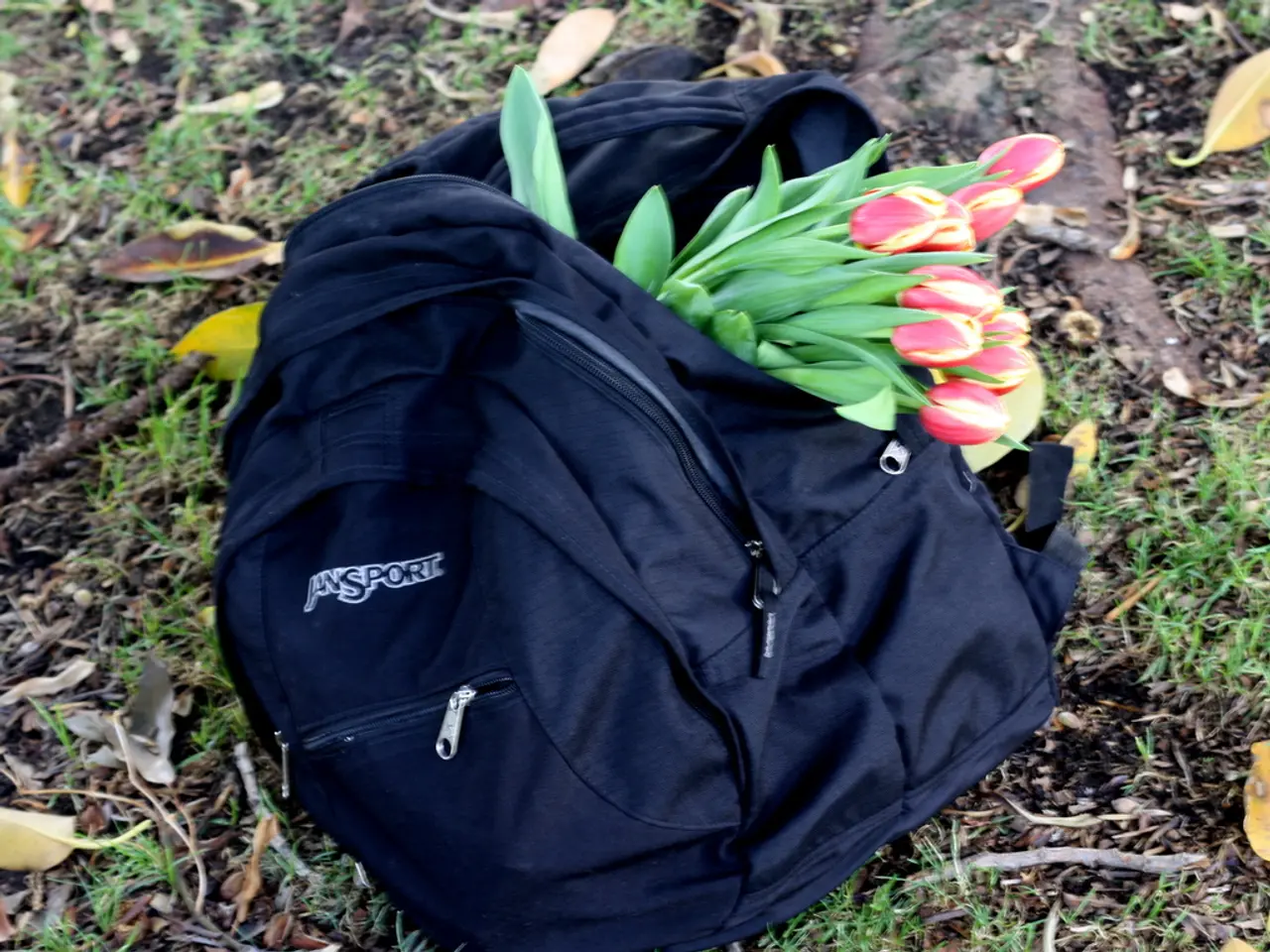Transforming Autumn Leaves into Greenyard Treasure: Converting Autumn Hues into Garden Wealth
In the autumnal season, gardens are adorned with a bounty of fallen leaves. Instead of raking them away, consider composting them to enrich your garden's soil health. Here's a comprehensive guide to turning fallen leaves into a nutrient-rich organic material, often referred to as "garden gold."
## Choosing the Composting Method
For composting leaves, traditional backyard composting is the most suitable due to their high carbon content. Other methods include backyard composting piles or bins, and compost tumblers, which offer a more contained process but may not be as suitable for large volumes of leaves.
## Preparing the Leaves
To accelerate the composting process, it is recommended to shred the leaves into smaller pieces, increasing their surface area for faster decomposition.
## Composting Process
1. **Layering**: Start by adding a layer of coarse materials like small twigs to improve aeration. Layer shredded leaves as part of the "brown" materials due to their high carbon content. Introduce "green" materials such as food waste, grass clippings, or manure to balance the nitrogen levels.
2. **Carbon-to-Nitrogen Ratio**: Aim for a C:N ratio of around 25:1 to 30:1 by mixing leaves with nitrogen-rich materials like food scraps or grass clippings.
3. **Moisture and Aeration**: Maintain a moisture level similar to a damp sponge. Regularly turn the compost pile to ensure good aeration and speed up decomposition.
4. **Monitoring and Maintenance**: Check the temperature of the compost pile. It should be warm, indicating active microbial activity. Monitor for odors and pests, adjusting the moisture and turning as needed.
## Using Composted Leaves
Once the leaves are fully composted and the pile has cooled, they can be added to garden beds to improve soil structure, retain moisture, and provide nutrients.
By following these steps, you can effectively compost fallen leaves and enhance your garden's soil health. The resulting compost, or leaf mold, is often used in the garden as a soil conditioner. The process of composting leaves is a way to recycle a seasonal resource, keeping them out of landfills and reducing overall waste.
In summary, composting leaves is an eco-friendly and beneficial practice for gardeners. By transforming fallen leaves into nutrient-rich organic matter, you can contribute to the health of your garden while reducing waste and promoting sustainability.
To effectively utilize fallen leaves in gardening and contribute to a sustainable lifestyle, consider adopting the practice of composting them. You can choose traditional backyard composting methods, such as using piles or bins, or opt for compost tumblers for a more contained process. Follow steps to accelerate decomposition, maintain an optimal carbon-to-nitrogen ratio, and keep the compost pile moist and aerated. Once composted, use it as a soil conditioner in your home-and-garden to nourish your garden beds and promote a healthier lifestyle for your plants.




